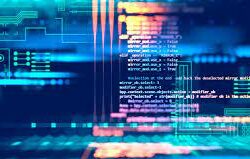Programming languages serve as the foundation of the digital world, enabling humans to communicate with computers and build a wide range of software applications. Over the years, numerous programming languages have emerged, each with its own strengths, weaknesses, and areas of application.
This article aims to provide a comprehensive guide to programming languages, exploring their evolution, features, and popular use cases. From the early days of programming to the modern era, we will delve into the world of code and showcase the diversity of languages that shape our technological landscape.
I. Evolution of Programming Languages:
Machine Languages:
The birth of programming languages: the need for abstraction.
Machine languages and the binary code.
Challenges and limitations of machine languages.
Assembly Languages:
The emergence of assembly languages.
Symbolic representations of machine instructions.
Assembly language programming and its impact.
High-Level Languages:
The rise of high-level languages.
Fortran: the first high-level language.
The advent of ALGOL, COBOL, and other early high-level languages.
The impact of high-level languages on programming productivity.
II. Popular Programming Languages:
C and C++:
The legacy of C and its influence.
The evolution of C++: object-oriented programming.
Applications and industries where C and C++ excel.
Java:
The Java programming language and its platform.
Java’s “write once, run anywhere” concept.
Java’s extensive libraries and frameworks.
Java’s role in enterprise development.
Python:
The rise of Python as a versatile and beginner-friendly language.
Python’s emphasis on readability and simplicity.
Python’s vast ecosystem and its applications in data science, machine learning, and web development.
JavaScript:
The ubiquitous nature of JavaScript.
JavaScript’s role in web development and client-side scripting.
The emergence of frameworks like React and Node.js.
JavaScript’s evolution into a general-purpose language.
Ruby:
Ruby’s focus on developer happiness and productivity.
The Ruby on Rails framework and its impact on web development.
Ruby’s expressive syntax and dynamic nature.
Go:
The birth of Go: a language for the cloud era.
Go’s simplicity, efficiency, and concurrency support.
Go’s applications in system programming and distributed systems.
III. Domain-Specific Languages (DSLs):
Definition and Purpose:
Understanding domain-specific languages.
The benefits of DSLs for specific problem domains.
Examples of popular DSLs and their applications.
SQL:
The structured query language for database management.
SQL’s role in data manipulation, retrieval, and management.
The standardization of SQL and its variants.
MATLAB:
MATLAB as a language for numerical computing and data analysis.
MATLAB’s extensive mathematical functions and toolboxes.
Applications of MATLAB in engineering, scientific research, and academia.
R:
R’s emergence as a language for statistical analysis and data visualization.
R’s vast collection of statistical packages and libraries.
R’s popularity in the data science community.
IV. Future Trends and New Paradigms:
Functional Programming:
The rise of functional programming languages.
Key features of functional programming.
Examples of functional programming languages like Haskell and Scala.
Concurrent and Parallel Programming:
The increasing importance of concurrent and parallel programming.
Languages and frameworks for concurrent programming, such as Erlang and Akka.
Leveraging parallelism through languages like CUDA and OpenCL.
Domain-Specific Languages in the Age of AI:
The intersection of AI and DSLs.
DSLs for machine learning and deep learning.
The role of DSLs in democratizing AI development.
Conclusion:
Programming languages have come a long way since the early days of machine languages, revolutionizing the way we interact with computers and shaping the digital landscape. From the powerful and low-level C and C++ to the versatile Python and JavaScript, each programming language has its own purpose and unique features. Furthermore, domain-specific languages provide tailored solutions for specific problem domains, catering to the diverse needs of different industries.
As technology continues to advance, new paradigms like functional programming and concurrent programming are gaining prominence, while the fusion of AI and DSLs opens up new possibilities for innovation. By understanding the strengths and applications of various programming languages, developers can make informed choices to solve complex problems and unlock the true power of code.









